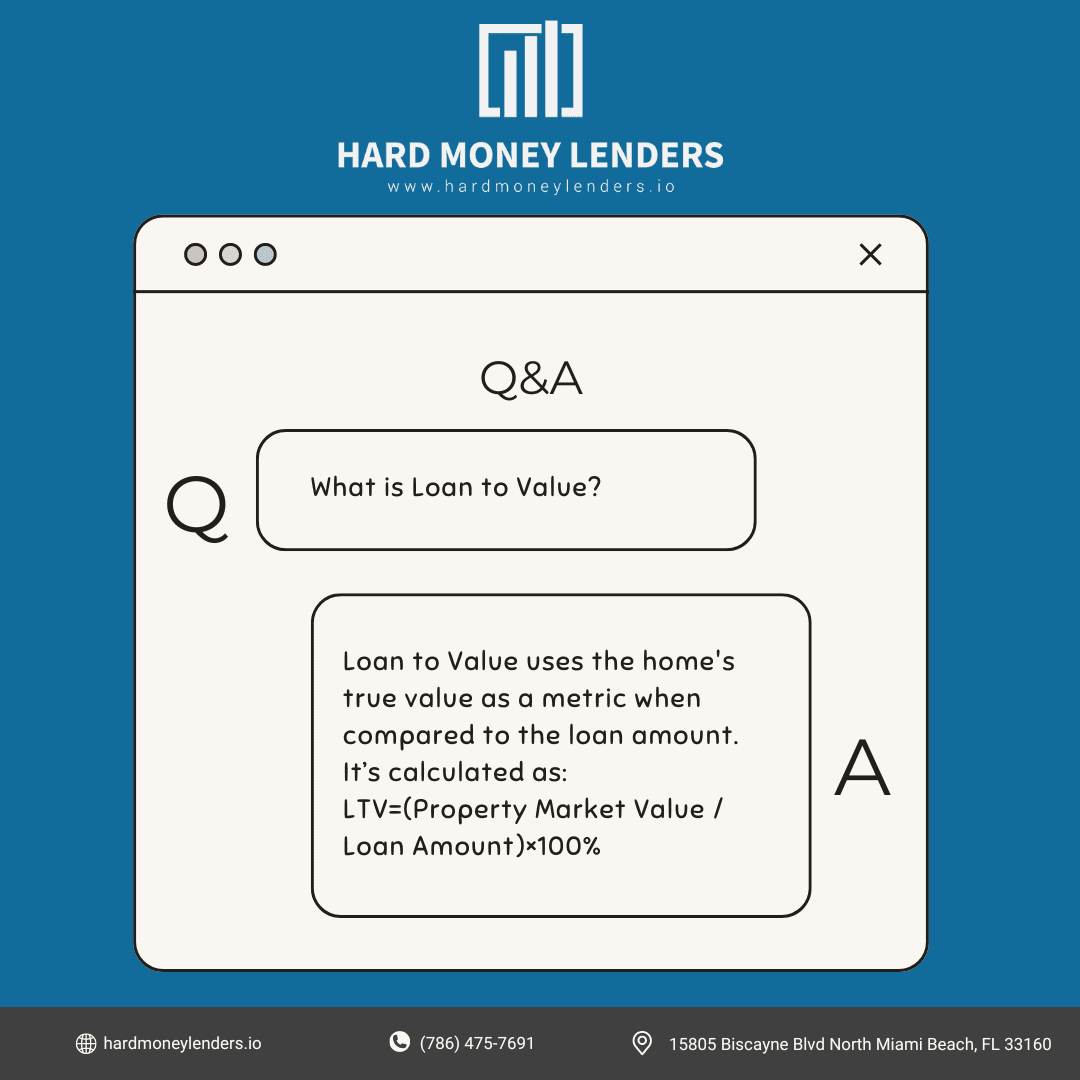Loan to Cost vs. Loan to Value – What’s the Difference?
If you’re new to real estate investing, you may be wondering the difference between Loan to Cost vs. Loan to Value. The terms may seem interchangeable, although they’re anything but! The Loan to Cost (LTC) ratio uses an investment’s true, paid-for price to determine a loan ratio, while the Loan to Value (LTV) ratio uses your investment’s appraised value to determine the loan ratio. Some may say that these terms can be used interchangeably, but in reality, Loan to Cost and Loan to Value are different (and both important) factors that should be considered when making a real estate investment decision! Below, we’ll show you everything you need to know about LTC, LTV and the difference between LTC and LTV
What is Loan to Cost?

Loan to Cost is the amount of money loaned vs. the price you pay for the house. If you buy a starter home for $100,000 and are loaned $80,000, your Loan to Cost (LTC) will be 80%. This is the ratio used by traditional lenders and banks when loaning money, because they assume the most recently paid price for the property (the price you paid) is the most relevant and true data point for the property’s true value.
Loan to Cost ratio is the most widely used ratio when lenders review your loan request. They will take the price you paid as the most up-to-date price information on the property and act accordingly when issuing your loan. Traditional lenders use Loan to Cost when issuing your loan, and typically require a Loan to Cost of 80% or less. You can get a Loan to Cost ratio of 95% or more in the home with certain programs like FHA, however.
The loan to cost calculation formula is:
LTC=(Total Project Cost / Loan Amount)×100%
What is Loan to Value?
 Loan to value is similar to Loan to Cost, but not the same. Loan to Value uses the home’s true value as a metric when compared to the loan amount. Let’s say that the same starter home from the previous example has still been purchased for $100,000.
Loan to value is similar to Loan to Cost, but not the same. Loan to Value uses the home’s true value as a metric when compared to the loan amount. Let’s say that the same starter home from the previous example has still been purchased for $100,000.
The house may actually be worth $120,000, but the seller decided to sell their home on the cheap because they needed to leave the country quickly for… reasons. The value of the home (often determined by an appraiser before a home’s sale) will be used in the loan to value calculation. Now, you would divide the home’s value ($120,000) by the loan ($80,000) to get a loan to value of 66.6%. That’s quite the difference from the 80% loan to cost ratio!
LTV=(Property Market Value / Loan Amount)×100%
Loan to Cost vs Loan to Value: The Key Differences
Understanding the differences of loan to cost and loan to value are important for real estate investors to effectively manage and finance their projects. Here’s a look at the key differences between the two.
Applications
- LTC Usage: Typically applied in development projects or substantial rehabilitations where the total investment surpasses the current market value of the property. This figure is crucial during the initial phases of project planning and securing finance, as it provides a detailed overview of the entire capital needed for project completion, encompassing not just purchase prices but also construction, labor, materials, and other associated costs. LTC is invaluable for projects where the future value, post-completion, is expected to significantly exceed the current valuation due to improvements.
- LTV Usage: Predominantly used in straightforward real estate transactions such as purchasing existing properties or refinancing. LTV is calculated based on the current market value of a property, making it a snapshot metric that lenders use to gauge the immediate risk associated with the loan. This measure is straightforward and does not account for any planned enhancements or modifications that could alter the property’s value in the future.
Detailed Risk Assessment
- LTC Risks: Reflects a comprehensive risk profile by incorporating the full projected cost of the property project. It evaluates the investor’s exposure to overruns, market fluctuations during the development phase, and potential delays that could affect the project’s completion. Higher LTC ratios may indicate a riskier project from a lender’s perspective because they reflect a larger financial commitment relative to the project’s current market value.
- LTV Risks: Focuses on the existing equity or value of the property as security against the loan. A lower LTV ratio means more equity is available, reducing the lender’s risk. In scenarios where the property value may decline, a low LTV helps protect the lender’s and investor’s interests by ensuring the loan amount remains manageable compared to the market value.
Impact on Financing
- LTC Financing Challenges: Obtaining high LTC financing can be more arduous as it generally involves higher risk. Developers and investors need to provide detailed project plans, projected cash flows, and sometimes, additional collateral or personal guarantees. Lenders may impose stricter terms, including higher interest rates or equity requirements, to mitigate the risks associated with comprehensive development projects.
- LTV Favorable Conditions: Since LTV assesses borrowing based on the established market value of the property, it often results in more favorable financing conditions. Properties with a low LTV ratio pose less risk to lenders, potentially leading to lower interest rates, better terms, and more willingness on the part of the lender to finance the project. It aligns the loan amount more closely with the property’s proven market value rather than speculative future outcomes.
What’s a Good LTC and LTV ratio?
Assuming you are buying properties for under fair market value, your Loan to Cost ratio should always be higher than your Loan to Value ratio. That’s because the value of the investment property should be more than you pay for it (that’s the goal, at least!) If you overpay for a property, however, your Loan to Value ratio will be higher than your Loan to Cost ratio.
Good Loan to Cost and Loan to Value ratios are entirely relative to each investment and your goals. Less equity in a project is not always a good thing, and generally makes investments more risky… unless you’re ok with defaulting on your loan, that is! It’s best practice to do your due diligence and test multiple combinations of LTC and LTV in projections to see what makes the most sense for your investment project.
Do Lenders Use Loan to Cost or Loan to Value?
Loan to Cost and Loan to Value ratios are both used by investors and lenders to gauge risk in a project. In general, the more equity you’re willing to put in to reduce the loan’s Loan to Cost and Loan to Value ratios, the more “safe” the bank will consider the investment to be. Traditional large banks will only lend based on Loan to Cost, meaning that killer deal you found will not be factored into the loan terms.
Hard money lenders, like our site for example, will be much more willing to consider LTV when creating your loan package. Hard Money Lenders tend to look beyond the strict loan criteria of traditional banks and consider factors such as LTV when issuing loans. Using a Hard Money Lender may be a good option if you’re looking for loan terms that will benefit a fix-and-flip project or similar short-term investment.
Advantages of Using Hard Money Lenders
Hard Money Lenders will consider many more factors than traditional lenders when issuing loans to investors. Without a doubt, Hard Money Lenders are more friendly to the needs of investors and those with bad credit or no credit history. In the case of Loan to Cost versus Loan to Value, Hard Money Lenders will often consider both ratios when issuing your loan. If you can secure a fantastic deal on a property, Hard Money Lenders will be more open to issuing a favorable loan amount for your investment.
Since Hard Money Lenders use the underlying property as collateral for your loan, these lenders will take a closer look at the property you’ve chosen as an investment. If you can secure a great property in a desirable location for under market value, Hard Money Lenders will be very willing to work with you in determining loan terms that will help you close on your deal. Traditional lenders are much less concerned with the underlying property you’re purchasing, and more interested in your credit history, down payment, and due diligence on the property.
Final Thoughts: Loan to Cost vs. Loan to Value
In the end, both LTC and LTV should be considered when going into an investment. One metric, LTC, uses the properties’ purchase price divided by the loan amount. The other, LTV, uses the properties’ “true” or appraised value to measure against the loan amount.
Traditional banks will use LTC when creating your loan terms, while hard money lenders may offer loans based on LTV. Hard Money Lenders are more lenient and open than traditional lenders when giving favorable loan terms for great investment deals you find. But, if you’re looking for that rare 100% LTC loan, don’t hold your breath! They’re very rarely given out, even with a high LTV ratio.
When it comes to using LTC vs. LTV on your investment, do thorough research into the real value of the property the best you can and make your decision from there. Also, don’t forget to consider the dozens of other factors that go into an investment as well! There are many factors beyond LTC and LTV that make up an investment’s full picture.
FAQs about Loan to Cost and Loan to Value
Can you get a 100% LTC or 100% LTV loan?
The elusive 100% loan-backed investment purchase is very attractive to investors, but rarely ever possible. Most lenders will want you to have some of your own equity in the project, or “skin in the game,” because they feel otherwise that the project is too easy to abandon. Without having some of your own equity, it’s very unlikely that you’ll receive any sort of backing — even with a very good loan to value ratio (i.e. finding a project for sale at way below market value).
Think about it this way — someone you don’t know comes up and asks you for some money. They have an amazing plan, tons of experience, and a go-getter attitude to match; only problem is, they want to use your money. Also, they won’t put in any money of their own. Wouldn’t that make you hesitant to loan this money out, even if the person asking was an experienced investor?
Still think you could secure a 100% LTC loan for your project? Read what we’ve had to say in more detail about this topic here!
When Will LTC & LTV Differ?
Assuming you buy your investment property at fair market value, there will be no difference between Loan to Cost and Loan to Value. That’s because “cost” and “value” will be exactly the same and divided by the loan amount you receive.
Where Loan to Cost and Loan to Value differ is when there is a disparity between the price you pay for a property and its value. If you find a fantastic deal and buy an investment property for $100,000 with a fair market value of $120,000, your Loan to Cost and Loan to Value ratios will differ.
When Should I Use LTC vs. LTV?
Loan to Cost and Loan to Value should both be considered when making an investment. Loan to Cost represents the actual amount of money being paid versus the loan amount — a much more concrete set of numbers than a loan to value appraisal. From one appraiser to another, loan to value can vary; with loan to cost, you’re using the most updated price information — the amount that you paid — into consideration.
High Loan to Value ratio projects, ones that are underpriced on the market, will help indicate how fast to move on a project. If you find a very high LTV project, you may want to snag it up before another investor does! At the same time, it’s worth it to take a few breaths and be thorough about your research into why that property’s underpriced on the market; could something be wrong?
Does LTV include closing costs?
No, LTV does not typically include closing costs. The Loan to Value (LTV) ratio is calculated by dividing the mortgage amount by the property’s appraised value or the purchase price, whichever is lower. Closing costs, which can include fees for processing, title insurance, and appraisals, are usually paid separately and do not affect the LTV calculation. It’s essential for borrowers to budget separately for these costs, as they are out-of-pocket expenses required at the time of closing.
What happens if LTV is too high?
A high LTV ratio can increase the perceived risk for lenders as it suggests a smaller equity cushion to absorb potential market fluctuations, increasing the likelihood of the loan going underwater. If the LTV ratio is too high, lenders might:
- Require Private Mortgage Insurance (PMI) to offset the risk.
- Offer higher interest rates to mitigate potential losses.
- Restrict loan approval for riskier borrowers or properties. Ultimately, a high LTV can lead to higher monthly payments and more stringent loan conditions, impacting affordability and investment viability.
What is the most common LTV?
The most common LTV for residential mortgages is around 80%. This level is significant as it typically avoids the requirement for Private Mortgage Insurance (PMI), which is usually mandated for loans with an LTV higher than 80%. This standard has been established as a balance between allowing reasonable access to financing while providing a buffer to protect lenders against default.
Should LTV be higher than LTC?
Ideally, the Loan to Value (LTV) ratio should not exceed the Loan to Cost (LTC) ratio in real estate investments. Here’s why:
- Financial Leverage: An LTV higher than LTC might indicate excessive borrowing compared to the actual costs involved in purchasing and preparing the property. This could lead to increased financial risk, potentially resulting in negative equity if market values decline.
- Investment Health: A lower or equal LTV compared to LTC suggests a healthier investment stance, where the financing amount is well-aligned with the total investment in the property. This alignment helps ensure that the property’s market value adequately covers the loan amount, providing a safer financial buffer for lenders and investors.
- Risk Management: Maintaining an LTC ratio that meets or exceeds the LTV can safeguard investors against market fluctuations and ensure that the project remains viable even under financial stress.
What is the lowest LTV mortgage available?
The lowest LTV ratios typically start at around 50%, which are advantageous for several reasons:
- Equity Build-up: Lower LTV mortgages require a substantial down payment, resulting in higher initial equity in the property. This large equity stake provides a buffer against market downturns and decreases the likelihood of owing more than the property is worth.
- Favorable Financing Terms: Borrowers with low LTV ratios often qualify for lower interest rates and better loan terms because they pose less risk to lenders. A substantial down payment reduces the loan amount and hence the lender’s exposure, which can lead to more favorable financing conditions.
- Market Appeal: In volatile or declining markets, a low LTV provides security for both the lender and the borrower, making it an appealing option for cautious investors.
What is the LTV on a hard money loan?
LTV ratios for hard money loans typically range from 50% to 75%, reflecting their unique risk profile:
- Risk Considerations: Because these loans are secured by the property itself, and given the often speculative nature of the projects they finance, hard money lenders keep LTV ratios lower to mitigate their risk.
- Quick Funding: Hard money loans provide rapid financing based on property value rather than borrower creditworthiness, making them ideal for investors needing immediate cash.
Asset-Based Lending: The focus on property value means that hard money loans are less concerned with the borrower’s credit score and more with the real estate’s potential to generate a return on investment.

Yuval Elkeslasi is a distinguished professional in the finance industry, celebrated for his pioneering strategies and significant contributions as the leader of Hard Money Lenders IO. Hailing from Queens, New York, Yuval has built an impressive career, transforming the lending landscape through his expertise and visionary approach. Yuval Elkeslasi
attended Florida State University, where he obtained a bachelor’s degree in Finance. This academic foundation provided him with the necessary skills and knowledge to thrive in the competitive financial arena. Yuval’s tenure at Hard Money Lenders IO is marked by numerous pioneering accomplishments. He has introduced a variety of loan programs designed to cater to specific client requirements, including fix and flip loans, new construction financing, cash-out refinancing, rental property loans, and specialized financing for luxury items like yachts. Among Yuval’s significant achievements is securing an $8 million construction loan for a spec home builder in Port Royal, Naples. He also orchestrated the financing for a prestigious 72’ 2024 Viking Convertible yacht valued at $7.2 million. These transactions demonstrate Yuval’s adeptness at navigating complex financial landscapes and delivering exceptional results.
